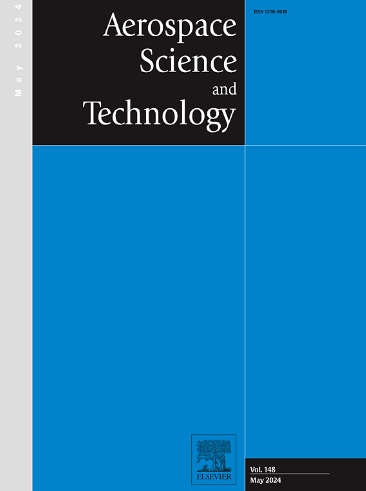Improvement of the SST model for streamline curvature effect based on field inversion and symbolic regression
IF 5
1区 工程技术
Q1 ENGINEERING, AEROSPACE
引用次数: 0
Abstract
Due to the coordinate-invariant nature of traditional eddy viscosity models, it is challenging to accurately predict flows with specific directional influences without modification. The rotation of reference frames or curved wall flows significantly increases the complexity of turbulence, making the accurate prediction of directional turbulent flows crucial, especially for aircrafts which have curved walls and wings. This paper improves the eddy viscosity coefficient by considering the mathematical principles of directional flow effects during model correction, using a data-driven framework of field inversion and symbolic regression. The development is oriented towards an SST-SC model suitable for flows with streamline curvature. The iterative Kalman filter algorithm is used to solve the inversion problem, and the inversion results serve as training data for the correction model, which is trained through symbolic regression. A series of representative cases are employed for model verification and validation. The findings indicate that the inversion process produces favorable results, and the enhanced model developed using the inversion data exhibits good generalizability.
求助全文
约1分钟内获得全文
求助全文
来源期刊

Aerospace Science and Technology
工程技术-工程:宇航
CiteScore
10.30
自引率
28.60%
发文量
654
审稿时长
54 days
期刊介绍:
Aerospace Science and Technology publishes articles of outstanding scientific quality. Each article is reviewed by two referees. The journal welcomes papers from a wide range of countries. This journal publishes original papers, review articles and short communications related to all fields of aerospace research, fundamental and applied, potential applications of which are clearly related to:
• The design and the manufacture of aircraft, helicopters, missiles, launchers and satellites
• The control of their environment
• The study of various systems they are involved in, as supports or as targets.
Authors are invited to submit papers on new advances in the following topics to aerospace applications:
• Fluid dynamics
• Energetics and propulsion
• Materials and structures
• Flight mechanics
• Navigation, guidance and control
• Acoustics
• Optics
• Electromagnetism and radar
• Signal and image processing
• Information processing
• Data fusion
• Decision aid
• Human behaviour
• Robotics and intelligent systems
• Complex system engineering.
Etc.
 求助内容:
求助内容: 应助结果提醒方式:
应助结果提醒方式:


